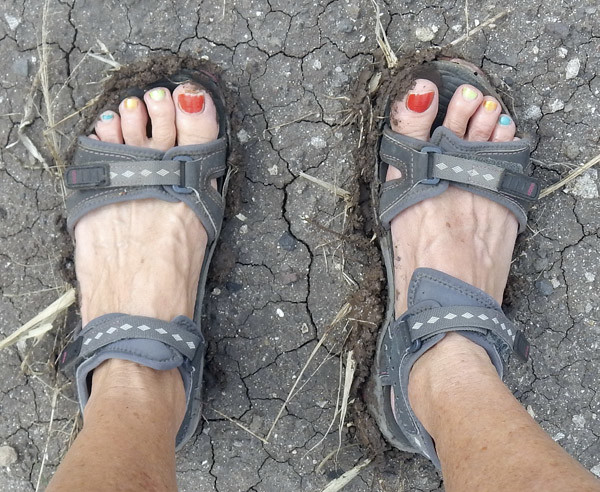Published in the Ocean Watch column, Honolulu Star-Advertiser © Susan Scott
February 2, 2015
Last week, in a muddy car rut puddle on the road to Kaena Point, I found one of the most amazing animals on the planet.
I had no idea the creature even existed until Bruce Carlson, the former Waikiki Aquarium director, sent an email describing what he and his biologist wife, Marj Awai, found. Bruce said the animals would die when the puddle dried up, so I hurried to the potholed road that leads to the Kaena Point Nature Preserve. And there, just as Bruce and Marj reported, were hundreds of Triops longicaudatus.
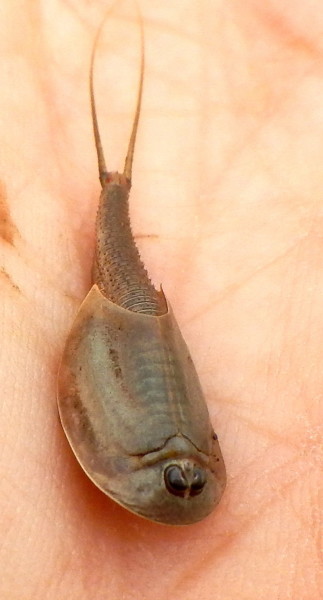 Triops means three eyes. The creature’s tiny
Triops means three eyes. The creature’s tiny
third eye lies between its larger two.
©2015 Susan Scott
The common name for this creature, which resembles a horseshoe crab, is tadpole shrimp, but it’s not a crab or a tadpole and doesn’t look like a shrimp. The 11⁄2 -inch-long Triops is an ancient crustacean all its own, considered a living fossil because it hasn’t changed in eons. The animals in our puddles exactly match their 70 million-year-old fossils.
Triops aren’t particularly rare. They live in puddles here and there throughout the world. You can even buy Triop egg kits on the Internet to raise your own. Sellers call the creatures aquasaurs, magic sea monsters and, in Australia, billabong bugs.
The road rut Triops are easy to spot in their puddles. The swirling silt clouds they make come from the creatures’ beating legs that direct a stream down a groove at the center of their undersides.
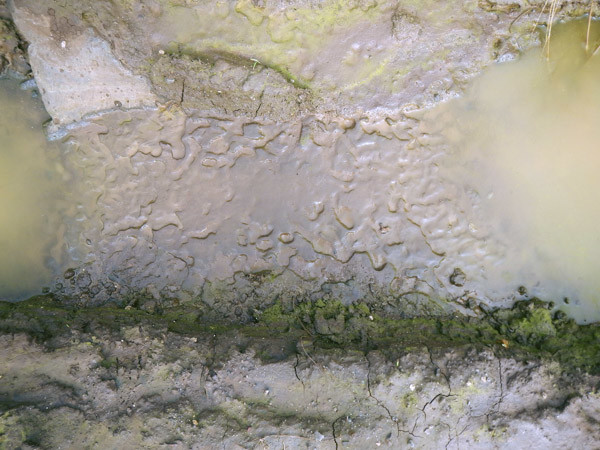
Silt and water escape through the groove’s sifting hairs, but larger plant and animal pieces remain. Inner lobes on the legs direct the trapped food to the mouth.
As you might expect from animals that live only in patches of muddy water, Triops eat anything and everything, including each other.
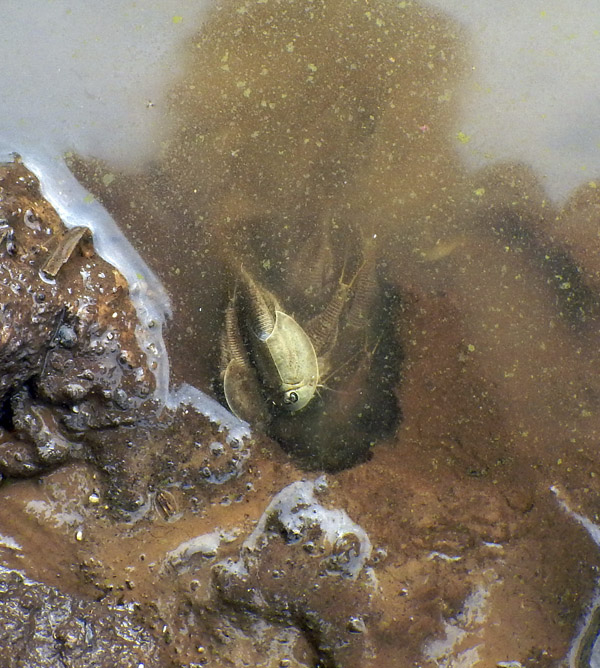
Each animal can be male, female or both, handy for reproducing when you’re stuck in a puddle. A female deposits her egg batches in the mud.
When the water evaporates, the adults die, but the thick-shelled eggs can live dry for up to 20 years. When rain makes puddles again, the eggs hatch and the cycle repeats.
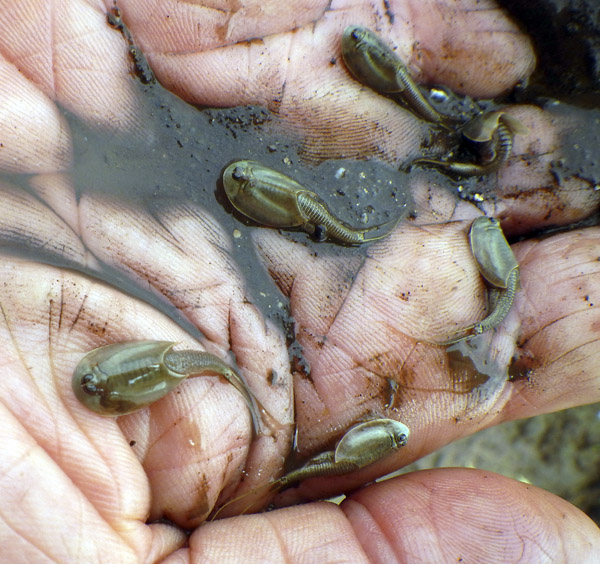
Adults live up to 90 days if their water holds out and birds don’t pick them off. Tracks around the Kaena Point puddles showed that birds were eating the Triops. Fish also eat them, which is why you’ll never find Triops in fishponds.
Kaena Point Nature Reserve hosts some of Hawaii’s most remarkable native animals. And who knew? So do the ruts in the road that lead there.
Thanks, Bruce and Marj, for sharing your discovery (see their video at bit.ly/1GSSI9c). I never had so much fun playing in the mud.
